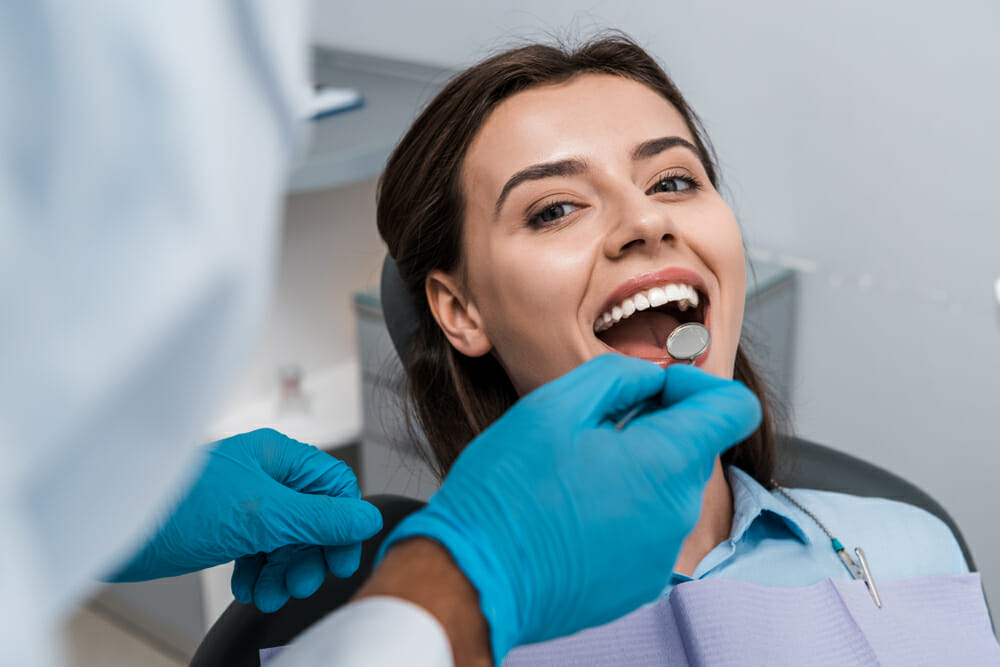Legacy Orthodontics for Dummies
Legacy Orthodontics for Dummies
Blog Article
The Only Guide to Legacy Orthodontics
Table of ContentsLittle Known Facts About Legacy Orthodontics.An Unbiased View of Legacy OrthodonticsThe Buzz on Legacy OrthodonticsHow Legacy Orthodontics can Save You Time, Stress, and Money.Indicators on Legacy Orthodontics You Need To Know
In addition, we use flexible treatment schedules, adaptable settlement choices and an enjoyable, enjoyable experience.An orthodontist is a dentist educated to identify, protect against, and deal with teeth and jaw abnormalities. Orthodontists function with people of all ages, from kids to adults.
Malocclusion, or misaligned teeth, can lead to dental problems, including dental caries, periodontal disease, and challenging or uncomfortable chewing. Yet not everybody is birthed with straight teeth. If you have a negative bite or big rooms between your teeth, you may want to get in touch with a dentist specializing in orthodontic treatment.
Legacy Orthodontics Can Be Fun For Anyone
( Photo Credit Rating: DigitalVision/Getty Images) Orthodontists make use of repaired and detachable oral devices, like dental braces, retainers, and bands, to alter the position of teeth in your mouth. Orthodontic treatment is for dental abnormalities, including: Uneven teethBite problems, like an overbite or an underbiteCrowded teeth or teeth that are too much apartJaw misalignmentThe objective of orthodontic therapy is to enhance your bite.
A healthy bite guarantees you can consume, eat, and speak appropriately. While you could consider orthodontists as mainly for children or teens that need braces, they can deal with oral problems at any age. Orthodontists attend university, dental college, and orthodontic school. After college graduation, they spend 2 or 3 years in an orthodontic residency program.
, but not all dentists are orthodontists. They focus on two locations: How to effectively and securely move teeth Exactly how to properly lead advancement in the teeth, jaw, and faceOnce an orthodontist has completed training, they have the choice to end up being board licensed.
9 Simple Techniques For Legacy Orthodontics
Imbalance, or malocclusion, is the most typical factor individuals see an orthodontist. It is hereditary and is the result of size differences in between the top and lower jaw or in between the jaw and teeth. Malocclusion causes tooth overcrowding, an irregular jaw, or irregular bite patterns. Malocclusion is typically treated with: Your orthodontist affixes steel, ceramic, or plastic square bonds to your teeth.
If you have only small malocclusion, you may have the ability to use clear braces, called aligners, as opposed to conventional braces (https://businesslistingplus.com/profile/legacyortho/). Some individuals need a headgear to assist move teeth right into line with pressure from outside the mouth. After dental braces or aligners, you'll require to put on a retainer. A retainer is a custom-made device that maintains your teeth in position.
They're usually utilized on kids. They can develop extra room in the mouth without needing to draw teeth. If you have a serious underbite or overbite, you might require orthognathic surgical procedure (likewise called orthodontic surgical treatment) to lengthen or reduce your jaw. Orthodontists utilize wires, surgical screws, or plates to sustain your jaw bone.
You may need to see an orthodontist if you have: Crowding or otherwise adequate space for all of your teethOverbite, when your upper teeth come by your base teethUnderbite, when your bottom teeth are too much forwardSpacing or issues with gapsCrossbite, which is when your top teeth fit behind your bottom teeth when your mouth is closedOpen bite or a vertical space between your front bottom and upper teethMisplaced midline, when the center of your bottom and upper teeth don't line up Dealing with a dental malocclusion can: Make attacking, chewing, and speaking easierImprove the proportion of our face and your total appearanceEase discomfort from temporomandibular joint conditionsDifferent your teeth and make them simpler to cleanse, assisting avoid tooth degeneration or dental caries It's typically a dental practitioner who initially notices misaligned teeth during a regular exam.
Getting The Legacy Orthodontics To Work

During your first orthodontic examination, you'll likely have: An oral examPhotos taken of your face and smileDental X-raysPanoramic (360 degree) X-rays of your face and headImpressions to produce mold and mildews of your teethThese tests will help your orthodontist understand how to proceed with your therapy. braces. An orthodontist is a dental practitioner who's had training to treat your teeth and jaw
An orthodontist is concentrated on your bite, so something like a cracked tooth would be handled by a dentist. Orthodontists are focused on your bite, or the way your teeth fit with each other, and the straightness of your teeth.
Ever asked yourself exactly how celebs always seem to have perfectly straightened teeth? Orthodontists are oral specialists that focus on fixing abnormalities in the teeth and jaws.
Excitement About Legacy Orthodontics

While braces are one of the most typically identified orthodontic treatment, orthodontists have a diverse toolkit at their disposal. The certain method chosen depends upon the extent of the instance, the patient's age, and individual choices. These reliable dental braces utilize a system of brackets bound to the teeth try this site and connected by cables.
These removable trays are tailor-made to gradually move the teeth's setting. In situations of slim jaws, palatal expanders can be used to create space for correct tooth positioning.
Report this page